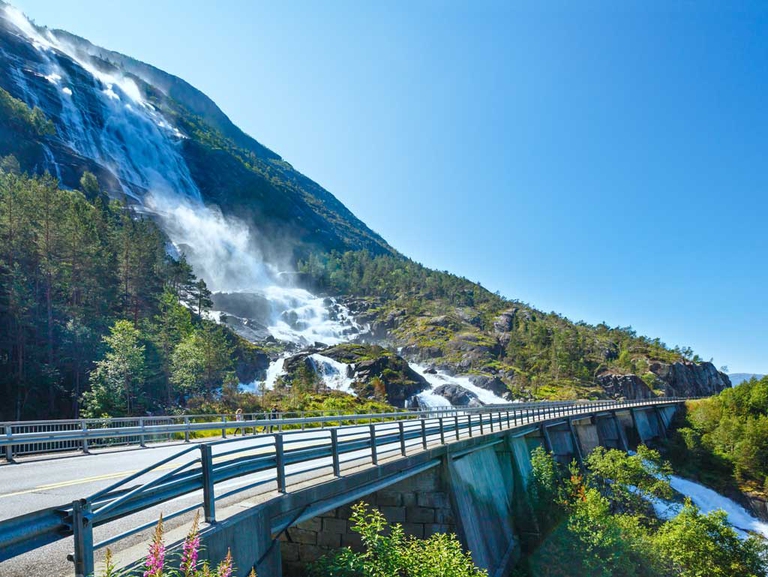
Milan has announced one of Europe’s most ambitious mobility schemes, known as Strade Aperte (open roads). Its goal is to reduce cars in phase 2 of the lockdown by increasing bike lanes and pedestrian areas.
A group of experts is creating an algorithm that can calculate, according to the users’ photos and comments, the most pleasant and interesting itinerary, rather than the one usually suggested by GPS devices and applications.
It’s almost involuntary: when we write the destination in our sat-nav or in a map application we always choose the “fastest” route. But have you ever thought that, when we’re not in a hurry or when nobody is waiting for us, we can even opt for the most beautiful and interesting route to reach our destination? Yes, how is it possible, you’d probably say, if we don’t know the areas we’re passing through?
The answer lies in a project a team of experts including Daniele Quercia and Luca Maria Ajello of Barcelona’s Yahoo Labs as well as Rossano Schifanella of the University of Turin are working on. The project is entitled The Shortest Path to Happiness: Recommending Beautiful, Quiet, and Happy Routes in the City and their invention consists in an algorithm that should suggest the most beautiful routes depending on the website users’ opinions. Initially, the experiment was conducted in London: to put it in simple terms, the team chose a series of images of the city from Google Street View and loaded them on the website UrbanGems.org. So, it asked the city residents to say the characteristics of the streets and neighbourhoods. The ones that received the best comments has been used to create the most beautiful route.
The experiment then continued in Boston, it used Flickr’s photos (owned by Yahoo) instead of loading them on UrbanGems.org and it was based on the number of loadings of the pictures featuring the same place as well as on their relative tags and comments. Both in London and Boston the itineraries were judged by the citizens and it has been calculated that the route length increased by 12 percent on average (so, not that much) compared to the fastest route.
Obviously, the best way to appreciate this type of itineraries and their natural and architectural beauty is walking, ride a bike or using public means of transport. Low emissions cars that are safer and more comfortable, offer the possibility of enjoying surrounding landscapes as best as one can.

Low emissions cars are also beneficial for our health and the environment. The project is still in progress and, hopefully, soon we will enjoy beautiful routes, not just fast ones.
Siamo anche su WhatsApp. Segui il canale ufficiale LifeGate per restare aggiornata, aggiornato sulle ultime notizie e sulle nostre attività.
![]()
Quest'opera è distribuita con Licenza Creative Commons Attribuzione - Non commerciale - Non opere derivate 4.0 Internazionale.
Milan has announced one of Europe’s most ambitious mobility schemes, known as Strade Aperte (open roads). Its goal is to reduce cars in phase 2 of the lockdown by increasing bike lanes and pedestrian areas.
Formula 1, the world’s most important auto racing championship, has decided to turn the page and aim for carbon neutrality with the support of its teams, drivers and the whole racing circus.
Recycled plastic instead of asphalt: here’s the idea of a Dutch company for a sustainable and quick to build road that requires few maintenance works. Rotterdam has already said yes.
Toyota and LifeGate began telling the story of hybrid mobility back in 2006, now, on the road to the Tokyo 2020 Olympics, they’re still treading the path of sustainable mobility. Here are the main steps of the journey.
Germany’s first solar bicycle lane could be the prototype for the roads of the future. The photovoltaic tiles melt snow and ice, and are capable of absorbing noise.
The Vespa is back in an electric version. Production has just started and the first models can be reserved online starting from October.
The city of Utrecht, in the Netherlands, is home to a bridge for cycling and walking that stretches over roof garden of a Montessori school. This project enhances practicality and will allow families to bring children to school by bike, passing through green areas. Despite their functionality, bridges are often seen as an infrastructure that is
The Lego hair bike helmet is the latest Internet craze. For now it’s just a prototype but production on a large scale will probably start soon.
Just as fires often give way to new growth, after the Dieselgate scandal, which saw Volkswagen cheating on US emission rules, the German car manufacturer radically changed course, beginning to focus on sustainable mobility. The German car company aims to propose thirty zero-emission models and produce at least one million battery electric vehicles by 2025. An ambitious mission







